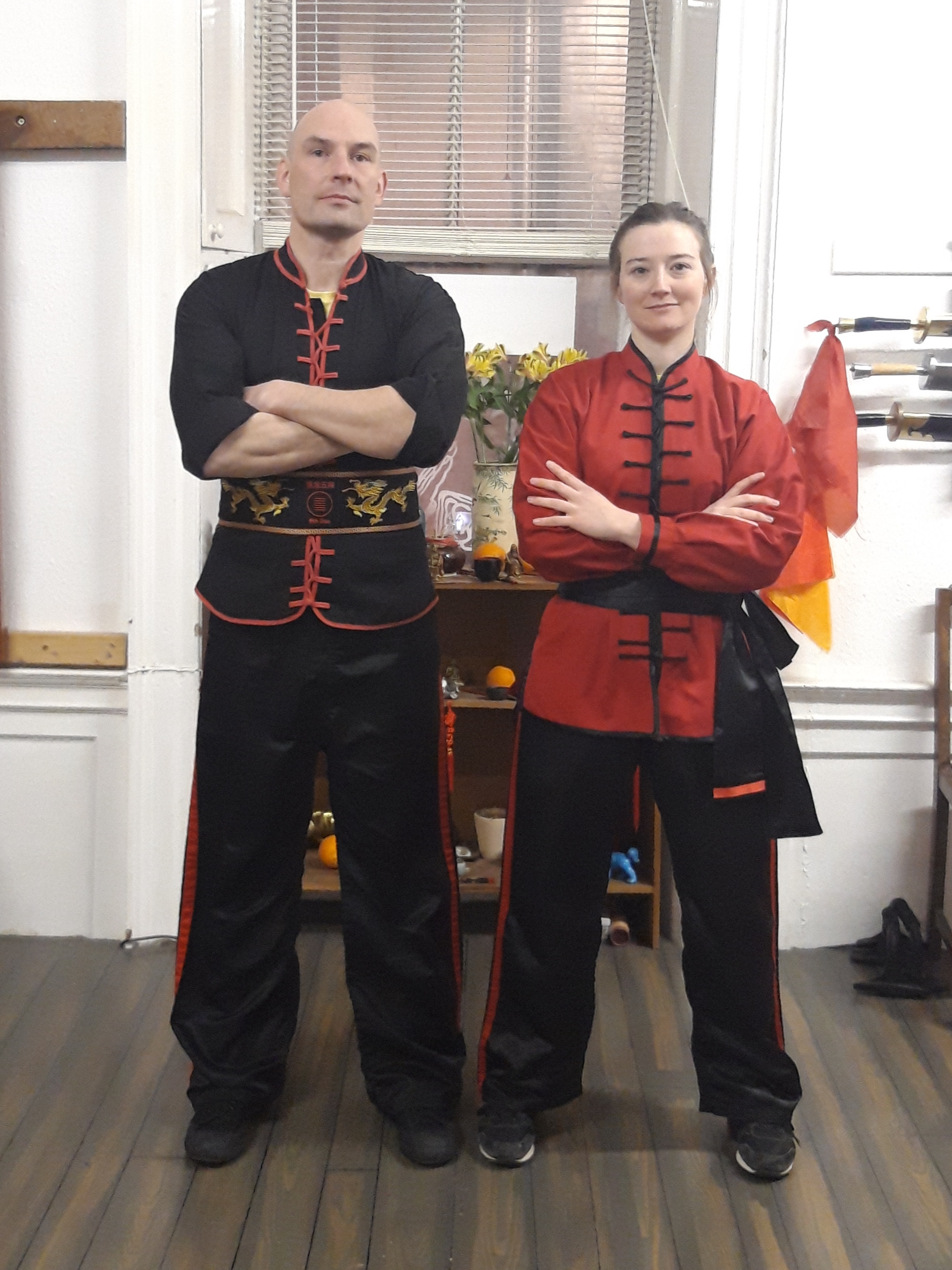
In our Student Spotlight series, our students have the opportunity to tell you about their training in their own words. Emma Archer has been training since 2015, participating in demonstrations and lion dance displays. Due to working life, Emma’s progress has been more gradual than some other students, however she enjoys committing her leisure time to training and gaining a deep appreciation for the style. Emma is currently learning the famous Fu Hok Seung Ying Kuen (Tiger & Crane Double Fist) form for her Yee Cup Junior level (1st test of 2nd level). Here Emma tells you about her experience of training at Yee’s Hung Ga Kung Fu Academy in Inverness.

What made you want to train in martial arts?
Originally, I was inspired by my father who practiced Lau Gar Kung Fu in his teens. He taught me some stances and techniques. These share similarities with Hung Ga. Of course, films starring famous practitioners were also an influence.
How did you hear about the school?
There was no Kung Fu school in my hometown, so growing-up I practiced Shotokan Karate off and on for several years. While I did enjoy the training and think it is a great style, something about Kung Fu always appealed to me more.
In my 3rd year of University, I desperately needed an alternative focus to my dissertation, and decided that it was time to look into Kung Fu again. Miraculously, there was a school across from my flat (Yee’s Hung Ga Aberdeen at the time); guess it was just meant to be! When I moved to Inverness for work, I knew of the school here and began training under the instruction of Sifu Simon Hepple.
What was your first class like?
Just as nerve wracking as my first class in Aberdeen. However, I had met Sifu Simon and some of the Inverness students before at tests and events, and they were very welcoming.
Did it live up to your expectations?
Exceeded them.
How did you feel after your first class?
Pumped with motivation to train again and after a few more classes, felt right at home.
What do you think of your training so far? Is there anything you’d change?
Enjoy every minute of it. If I could train all day every day, I would.
What are your hopes for your future in martial arts?
Apart from maintaining my own fitness and well-being, eventually I would like to help others on their Hung Ga journey.
Anything else that you wish to add?
I have trained at a few branches, and each has a positive and friendly atmosphere. While it is not common for a student to change schools, branch instructors have been very accommodating of my working situation. I feel accepted and enjoy training with everyone. Sifu as well as my Hung Ga brothers and sisters are always encouraging and help to improve my skills.
It is also nice when we join other schools for seminars and events. Not to mention our predecessors are very skillful, knowledgeable and approachable. Always an honour to learn from them.
Kung Fu truly improves your fitness and self-confidence, which has helped me in other areas of life.
Come try Hung Ga and join our awesome family.



